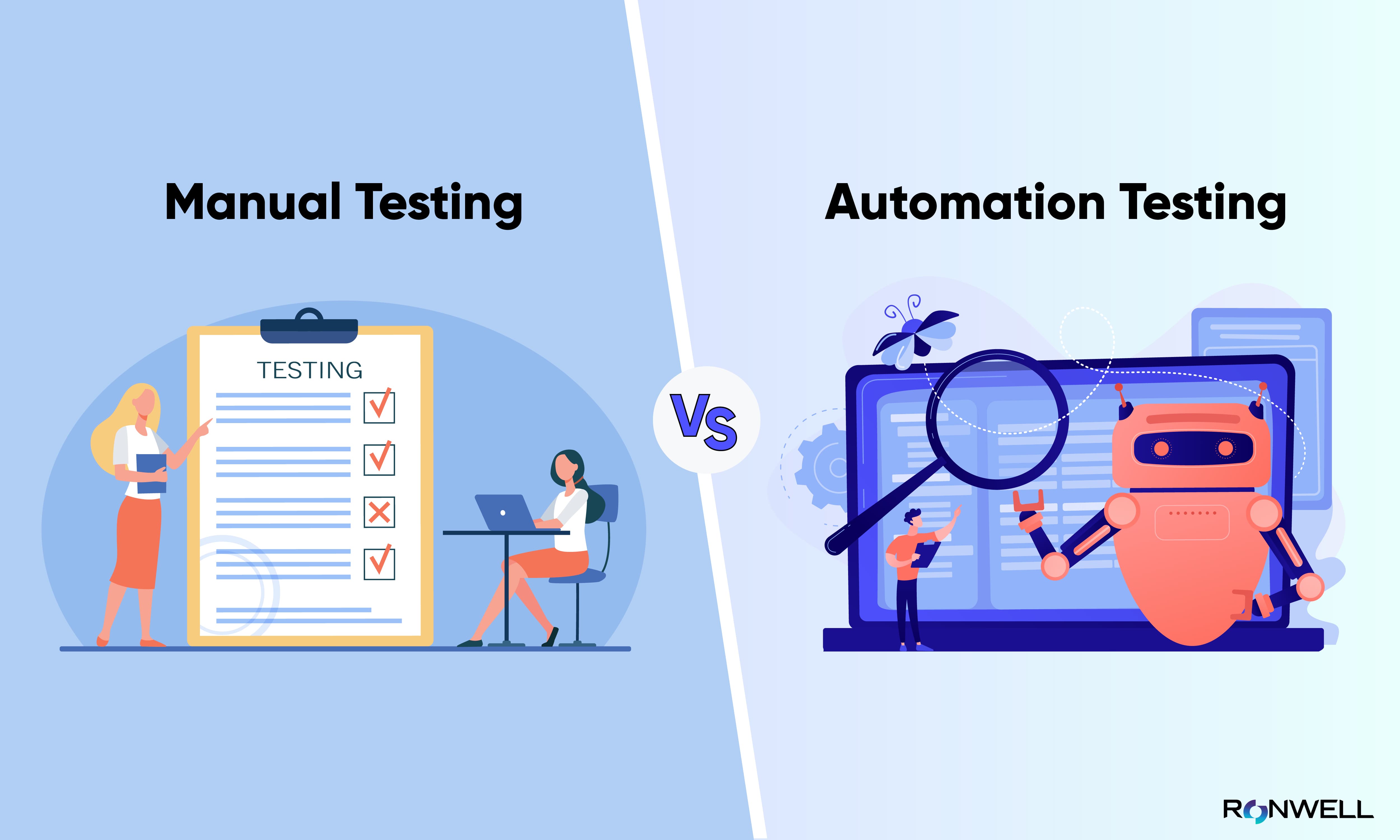Automation Testing Structures: Simplifying Complex Testing Circumstances
Automation Testing Structures: Simplifying Complex Testing Circumstances
Blog Article
From Guidebook to Automated Testing: A Comprehensive Guide to Transitioning Smoothly and Properly
In the world of software program testing, the shift from handbook to automated procedures has come to be an increasingly important shift for organizations seeking to enhance performance and accuracy in their screening practices. As technology proceeds to breakthrough, the demand for reliable and seamless automatic testing methods has never been much more pressing. The trip from manual to automated screening is not without its challenges, however when come close to purposefully and with a clear plan in mind, the advantages can be considerable - automation testing. In this detailed guide, we will certainly discover key steps and factors to consider important for a successful change, from the first option of tools to the assimilation of automation into existing process. Stay tuned to discover the insights that will aid lead the way for a smoother and more reliable testing procedure.
Advantages of Automated Checking
Automated testing supplies numerous benefits, improving performance and accuracy in software program growth procedures. One primary advantage is the considerable reduction in testing time. Automated examinations can be run at the same time on several tools and operating systems, substantially accelerating the testing phase compared to hands-on screening. This boosted efficiency enables for faster feedback on the top quality of the software program, allowing programmers to determine and attend to problems immediately.
Furthermore, automated testing guarantees a greater degree of accuracy in spotting issues. Uniformity in screening is likewise enhanced, as automated tests carry out the very same actions precisely each time they are run.
Picking the Right Devices

First of all, evaluate your objectives and needs. Understand the range of your project, the innovations involved, and the capability of your group. This analysis will certainly assist you identify the capacities and features you call for in your screening devices.
Second of all, consider the compatibility of the tools with your existing systems and processes. Seamless integration with your current software advancement lifecycle is vital to ensure a smooth shift to automation.
Additionally, examine the scalability and flexibility of the devices. As your testing needs develop, the tools should be able to adapt and accommodate adjustments properly.
Finally, factor in the support and area around the devices. Robust assistance and an active user area can supply beneficial sources and support when executing automated screening. By carefully thinking about these facets, you can choose the right tools that straighten with your requirements and established the stage for a successful transition to automated testing.
Composing Effective Test Scripts

When crafting examination manuscripts, it is necessary to think about the details demands of the software being checked and make certain that the scripts deal with all essential capabilities. Clear and detailed calling conventions news for examination manuscripts and examination cases can improve readability and maintainability. Additionally, including error handling mechanisms within the test scripts can help in recognizing and resolving issues without delay.
In addition, organizing examination scripts into modular elements can enhance reusability and scalability, lowering redundancy and enhancing performance in test script upkeep. Routine evaluations and updates to evaluate scripts are essential to maintain rate with developing software application demands and functionalities. By adhering to these concepts, testers can develop durable and reliable examination manuscripts that contribute dramatically to the success of automated screening procedures.
Integrating Automation Into Workflows
Efficient integration of automation devices into existing operations enhances and streamlines procedures performance within software advancement cycles. When including automation into workflows, it is vital to recognize recurring tasks that can be automated to save time and decrease human mistake. By seamlessly incorporating automated screening tools like Selenium or Appium right into the software application growth lifecycle, groups can attain faster responses on code changes, bring about quicker pest detection and resolution. This combination permits for continual testing throughout the development process, ensuring that any problems are recognized at an early stage, causing higher software program high quality. Furthermore, automation can be utilized to activate examinations instantly after each code dedicate, providing prompt recognition and liberating testers to concentrate on more facility circumstances. Proper assimilation of automation tools needs cooperation between advancement, testing, and procedures groups to establish a unified her comment is here workflow that optimizes effectiveness and effectiveness in providing high-quality software.
Guaranteeing a Smooth Shift
Efficiently transitioning to automated testing includes thorough preparation and mindful execution to decrease disruptions and optimize efficiency in the software development process - automation testing. To guarantee a smooth change, it is necessary to start by performing a detailed evaluation of the present screening procedures and recognizing locations where automation can bring one of the most substantial benefits. Involving with all stakeholders at an early stage at the same time, including developers, testers, and project supervisors, is important for amassing assistance and buy-in for the automation campaign
Interaction is vital during this shift stage. Clear communication of the goals, advantages, and assumptions of automated screening helps to take care of any type of resistance or problems that may emerge. Furthermore, supplying adequate training and sources for staff member to upskill in automation devices and techniques is crucial for ensuring a successful shift.

Final Thought
Finally, transitioning from manual to automated screening provides countless advantages, consisting of increased performance and integrity. By picking the appropriate devices, creating effective examination scripts, and incorporating automation effortlessly right into process, companies can ensure a smooth and successful change. It is necessary to embrace automation as a beneficial asset in software application testing procedures to improve total high quality and efficiency.
In the world of software application testing, the shift from manual to automated procedures has become a progressively important shift for companies looking for to enhance efficiency and precision in their testing methods. Automated tests can be run concurrently on several devices and running systems, drastically speeding up the testing stage contrasted to manual testing. their explanation Uniformity in screening is additionally boosted, as automated tests carry out the exact same steps exactly each time they are run.To guarantee the effective application of selected testing tools, the development of efficient examination manuscripts plays a critical function in confirming the functionality and efficiency of automated procedures - automation testing. By complying with these principles, testers can create effective and robust examination scripts that add substantially to the success of automated testing processes
Report this page